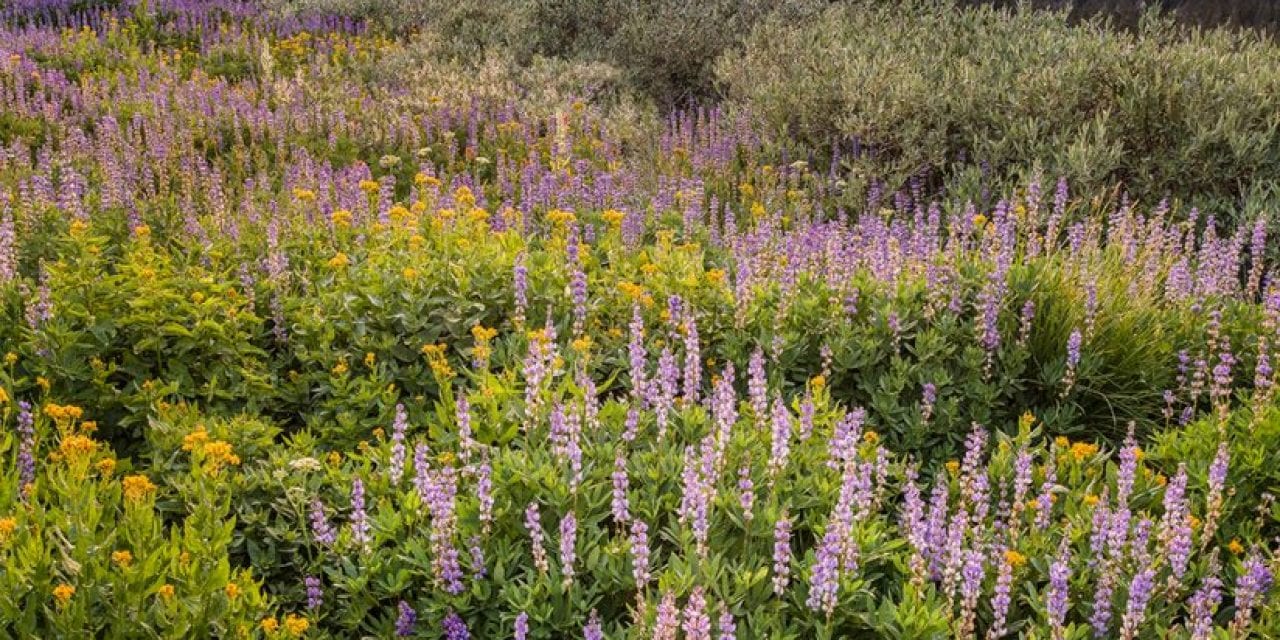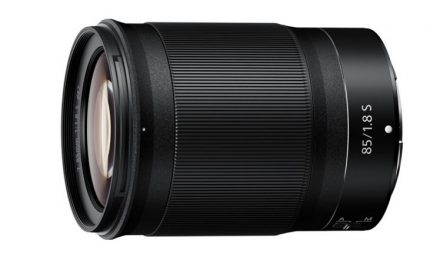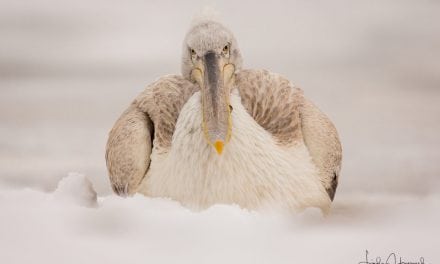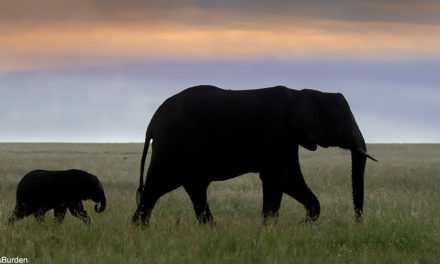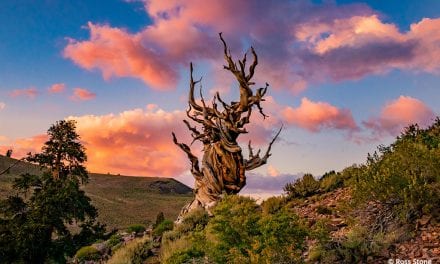Does camera sensor size really matter anymore? As photographers, we have never had so many great camera options that will produce amazing images. There are very capable cameras sporting everything from Micro Four Thirds sensors to APS-C, full-frame and all the way up to massive medium-format sensors.
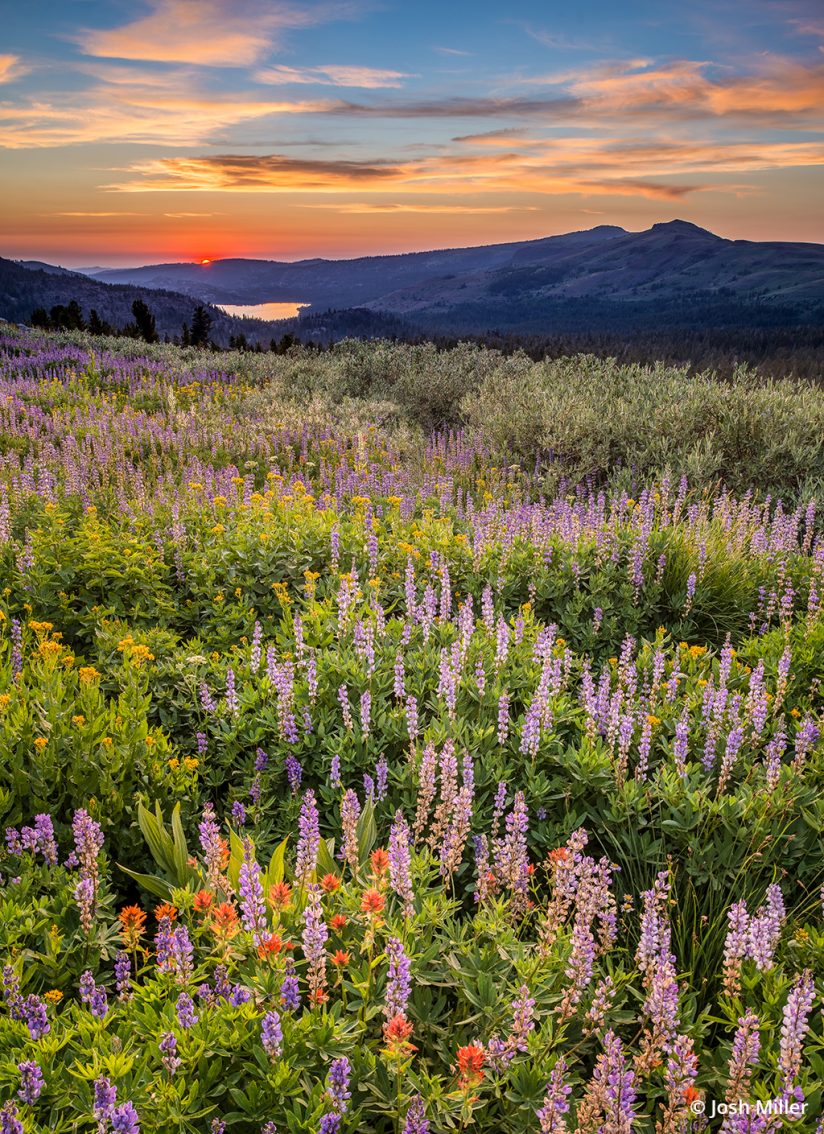
One of the advantages of full-frame when shooting this scene in the Sierras was the ability to use a tilt/shift lens to control the depth of field. Currently, none of the smaller-sensor systems offers perspective control lenses; lens selection remains a key advantage of full-frame systems.
The scene was very high contrast, so I bracketed for HDR, lessening in this case the dynamic range advantage of full-frame.
Right off the bat, let’s clear things up by saying yes, all things being equal, a larger sensor will give you a better image file, but like most matters in life, all things are not equal. The common wisdom is that for each jump in sensor size, you gain about a stop of performance in terms of noise and dynamic range. Following that logic, we should all be shooting 8×10 digital cameras or even larger in order to gain the absolute highest quality image. One can go down the rabbit hole of image quality to crazy extremes, but in reality this quest comes with its own issues beyond just the cost of such a camera. Who wants to carry a large-format view camera anywhere beyond the parking lot?
A Camera Is More Than Just Sensor Size
With so many great options in different formats now, the real key as an artist is to weigh your options and decide what attributes are the most important to you. Is it portability, lens options, absolute image quality, price? For the last 10 years or so, the go-to sensor format for most serious and professional photographers has been full-frame, which closely resembles the size of the 35mm film many of us had been shooting prior to switching to digital. In the early days of digital, most of us were shooting cameras from Canon or Nikon that had cropped APS-C sensors, which were very limited in terms of dynamic range and high ISO ability. Like many others shooting at the time, when I got my first full-frame camera (a Nikon D3 in my case), it blew me away with its ability to produce quality images at high ISOs in light I had never previously even bothered to shoot in. At the time, switching to full-frame sensor size was a game changer that gave us an edge over shooting smaller sensors.
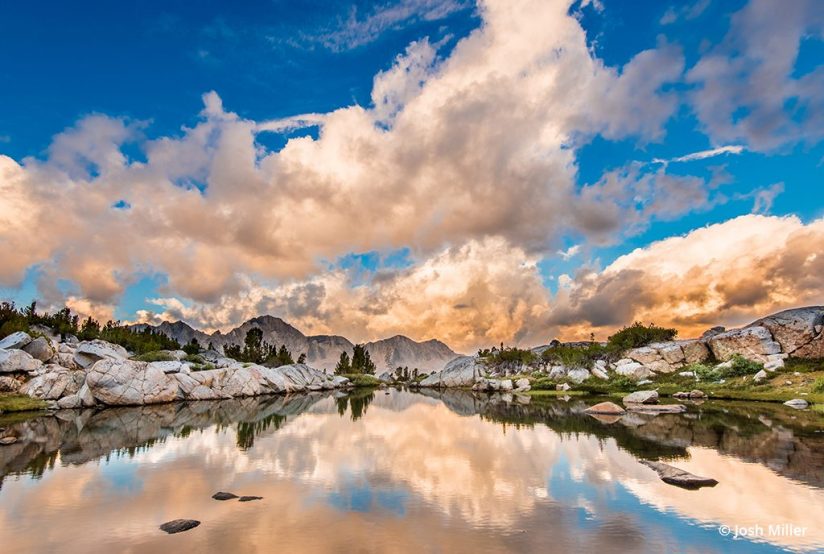
This image of Dusy Basin, Kings Canyon National Park, California, is from the very last time I carried a heavy full-frame kit on a long backcountry adventure. My camera system without the tripod weighed close to 10 pounds. Lately, I have been carrying the smaller Sony a6500 with the 10-18mm F4 OSS and Vario-Tessar T* E 16-70mm F4 ZA OSS lenses and have cut the weight in half.
Fast forward 10-plus years, and full-frame is still the primary choice of most professionals like myself. But in these intervening years, camera makers have really been pushing the limits of what smaller sensor cameras can do, allowing for less-expensive and lighter-weight cameras and lenses and sensors that, though smaller, are still capable of professional-level work. While Canon, Nikon and Sony have been mainly focused on their flagship full-frame camera systems and have relatively limited collections of lenses designed for smaller sensors (especially fast primes), companies like Fujifilm, Olympus and Panasonic have gone all-in on smaller sensor systems and have each developed large (if not thoroughly comprehensive) lens lineups with many options equal to the quality of those available for the larger full-frame systems.
The real question becomes, with so many systems from which to choose, which one is best for your needs? Maybe you’ll decide you want two different systems, each for specific uses. Much of the decision comes down to your planned end use for the images you produce.
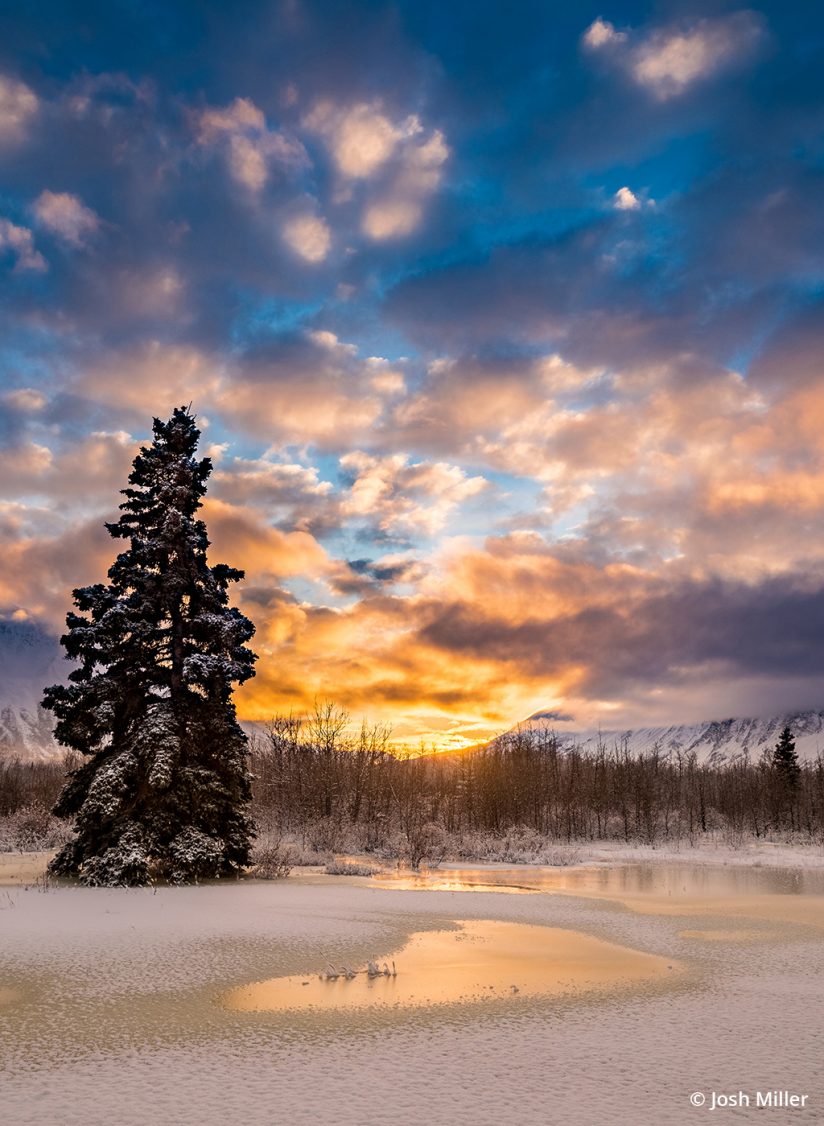
This sunset image was taken during one of my Alaskan Eagle workshops. While not of an eagle, I was testing the dynamic range of Olympus OM-D E-M1 Mark II. I found it to be quite impressive from such a small sensor. The image might have been a little sharper if I had shot it with my 45-megapixel D850, but that being said, it still looks great, and I have sold several prints of this image in sizes up to 20×30 inches and been more than happy.
Having shot with everything from Olympus Micro Four Thirds cameras to Fujifilm and Sony APS-C to Nikon full-frame DSLRs, and most recently with Nikon Z mirrorless, I can honestly say all three sensor formats will meet the needs of nearly all photographers. Having been a Nikon shooter for more than 20 years, I’m most familiar with that system, but over the last few years, I have owned or used all the other systems extensively in an effort to reduce my weight and also see where the future lies. In my experience with current cameras in these various formats, any camera with at least 20-megapixel resolution will make great prints up to 20×30-inches or larger, assuming you are shooting at reasonable ISOs with quality lenses and good technique.
Big Sensor Low-Light Advantage: Do You Need It?
Where things start to separate is when you are shooting in less-than-ideal conditions. Larger sensor cameras are going to beat out the smaller sensors when using higher ISOs to compensate for dim light. While the ISO breaking point of each camera is slightly different, if you mainly shoot in good light, this is a non-issue. Typically, it’s the landscape photographer who is most concerned with the ability to make huge prints, but landscape photographers are almost always shooting at base ISO locked down on a tripod, so who cares how the camera does at ISO 6400 compared to other cameras? Worried about the narrower dynamic range of smaller sensors? Again, if you are shooting landscapes on a tripod, you are likely already bracketing for HDR in high-contrast scenes, making this another non-issue.
For me, it’s when I’m shooting wildlife, sports or assignments where I have to produce quality images no matter how bad the light that I appreciate the edge full-frame gives me.
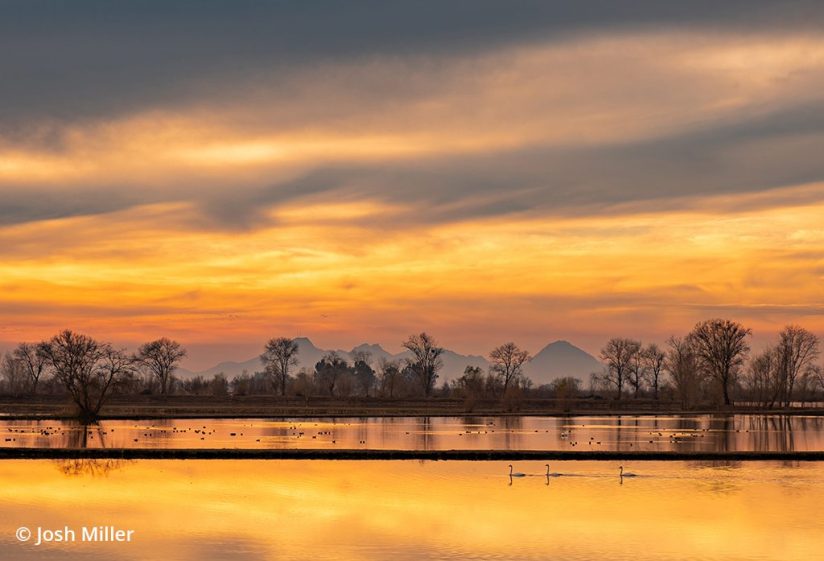
Shooting wildlife at sunset means low light and high contrast, typically the domain of full-frame cameras. But while I was trying out the Fujifilm X-T3 in the Sacramento Valley last winter, I was blown away with my ability to crop and open up the shadows prior to making a 20×30-inch print from the 26-megapixel file.
At this point, the smaller formats have replaced my full-frame system for some of the projects I shoot and for nearly all of my personal work. When I do a backpacking trip or ski tour, I always end up choosing an APS-C-sized sensor over my heavier full-frame Nikon D850 (though the new Z series brings down the weight of full-frame closer to APS-C cameras). I first started off using the Olympus Micro Four Thirds system, which I loved in terms of size and features, but I eventually upgraded to an APS-C system because the image quality at higher ISOs wasn’t where I needed it to be for the work I do. (To be fair, this was two generations ago in the Olympus world, so things have improved.) I really wanted to love the Olympus system because it is so small and portable, but I just found I needed a bit more ISO ability for shooting action in low light. That being said, I have one friend who is a full-time photo guide who has completely stopped using his pro Canon gear and says photography has “never been so much fun” now that he is using the Olympus system. There is really something to be said for how good and how small the lenses are in the Olympus system, especially for a wildlife photographer who can now hand-hold a 600mm f/4-equivalent lens no problem.
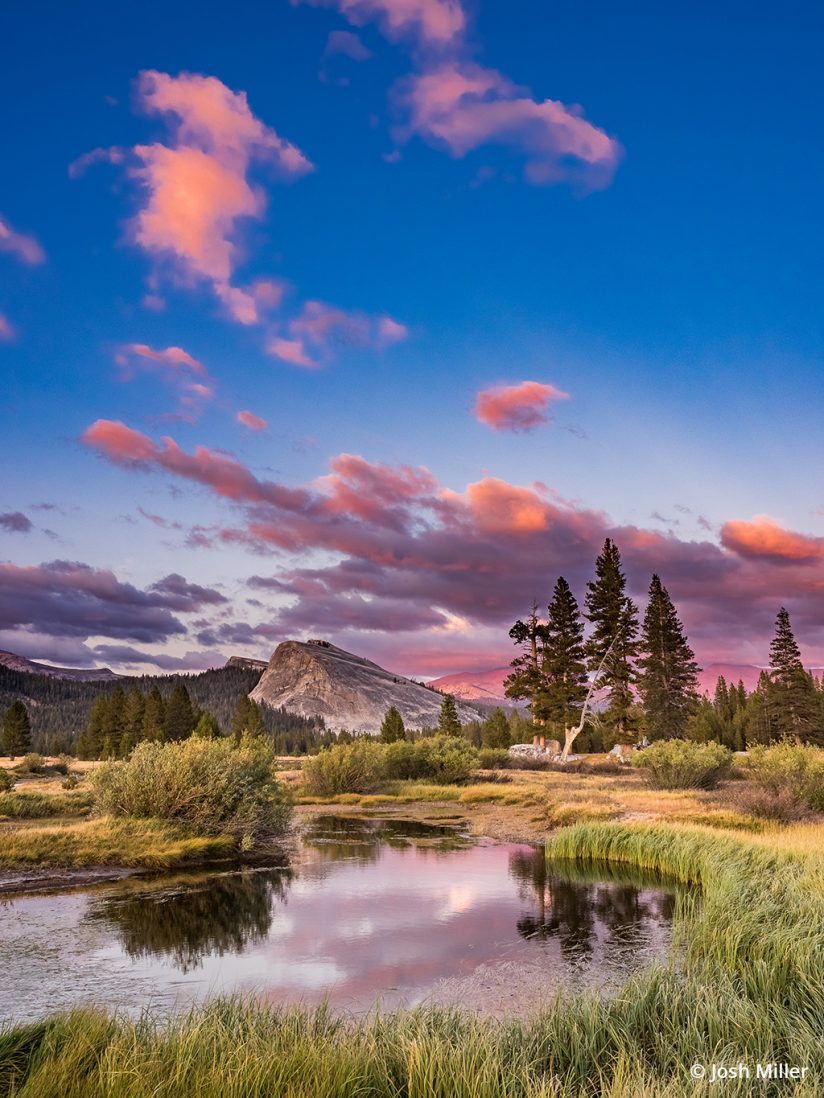
This image from Tuolumne Meadows was taken at sunset with the Olympus OM-D E-M1 that I owned and used extensively for a while as my backcountry setup. While I ended up upsizing to an APS-C system for better low-light results, when stopped down and bracketed for HDR on a tripod, the Micro Four Thirds sensor held up great in large prints.
For my needs, I have found the APS-C systems to be the sweet spot in terms of image quality versus weight and cost savings. I have been shooting the Sony a6500 alongside the Fujifilm X-T3 in an effort to figure out which system is right for me. While the Sony is a bit smaller and has a better buffer, the Fujifilm has far better lens offerings. The Fujifilm is also newer and thus has a better viewfinder, but the big buffer of the Sony is a plus for some of what I shoot. I use the Sony a6500 in a waterproof Salty Surf Housing for assignment work shooting rafting. I have made prints from both cameras up to 20 x 30 inches and have been blown away with their quality when shot at low ISO and good glass. While your mileage may vary and everyone’s quality threshold is different, coming from the days of 35mm slide film and early digital cameras, everything today is a major step up.
In fact, I would argue that for most photographers today, the gains by moving up to full-frame are not worth the extra cost and weight. I would even go so far as to say unless you are pixel peeping on the computer, you might not even be able tell the differences in the files when printing unless you are making huge prints. I have no worries about sending files from any of these formats to editors, and I know two full-time adventure photographers who, in order to save weight, are just using the Sony a6500 and sometimes even the latest Sony RX100 fixed-lens camera—with its relatively small 1-inch sensor—for their work, which is published worldwide.
The Best Camera For You
So how do you decide? With all the sensor formats being so good, I wouldn’t actually make sensor size my No. 1 determining factor when choosing to invest in a system. I would decide how good is good enough in terms of image quality and then look more broadly at the lenses and accessories being offered with the system. Do you do a lot of TTL flash work? Do you need a long telephoto lens for wildlife? In their Micro Four Thirds systems, both Olympus and Panasonic are offering solid lens collections. In APS-C, Fujifilm is really the only company offering a full range of professional-level lenses to meet nearly every need. Yes, Sony as well as Canon and Nikon offer great APS-C sensor cameras, but none of them has a selection of lenses to match their full-frame lens lines, especially the fast primes. Depending on your style of work, the lack of specific lenses in a system could be a deal breaker.
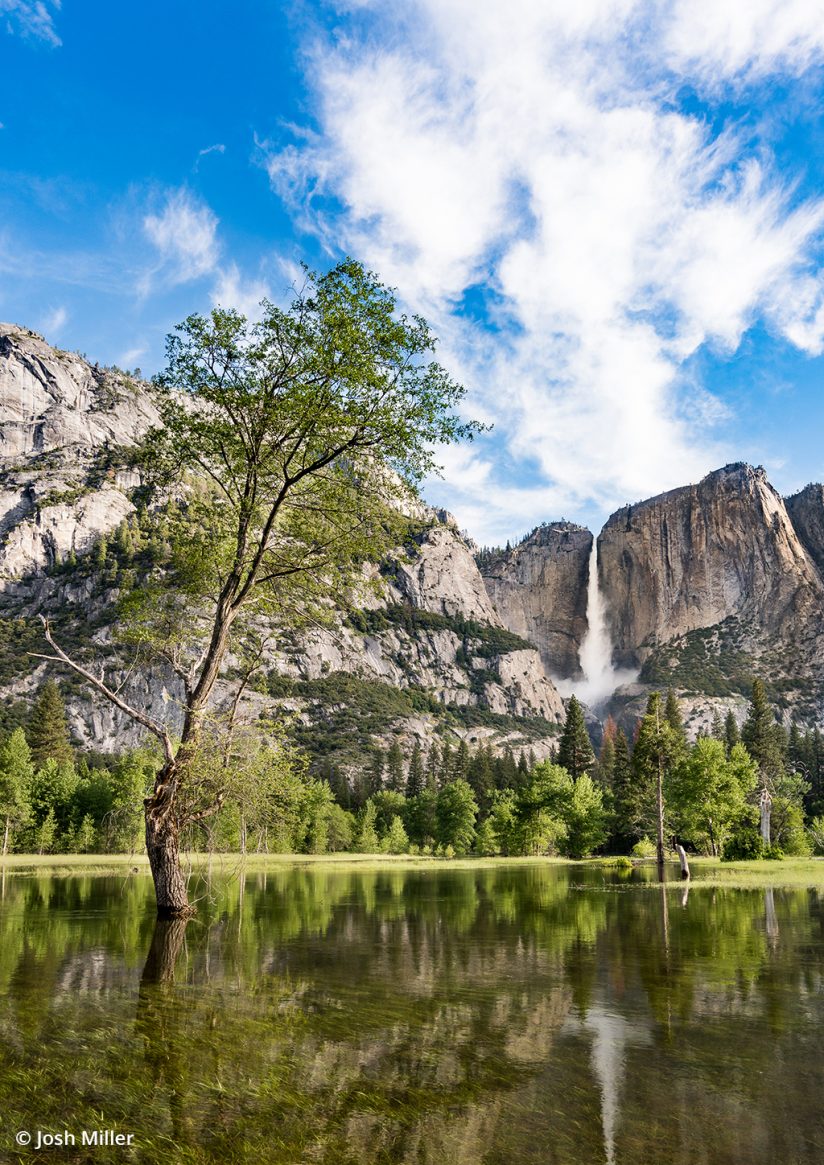
Using the wide Sony E 10–18mm F4 OSS lens, I was able to get up close to the flooded meadow for a clean reflection of Yosemite Falls. This was one of my first successful images using the Sony a6500. After making an amazing 20×30-inch print from the file, I started questioning my need for a camera with greater resolution.
No matter what you decide, today is a new world in terms of cameras. There is no question that mirrorless is the future and likely most of us will be shooting exclusively mirrorless cameras within the next few years. But choosing a sensor size to bring you into that new world is a tougher decision. For me, as a working professional, I will continue to pay more and carry extra weight in exchange for any edge my camera system can give me, but I can say that after spending a couple months shooting the Nikon Z mirrorless cameras this spring, I am 100 percent convinced I have bought my last full-frame DSLR.
When choosing your next camera, ask yourself these questions: Are you willing to pay the costs to have the absolute best image quality on the market, or have we reached a point where your image quality needs are met, and it’s more about ease of use and making photography fun? Is that full-frame or even medium-format camera really worth the extra hassle of lugging it into the field, or will something smaller do the trick? In the end, we all know the best camera is the one you are willing to carry to the most locations.
The post Does Camera Sensor Size Matter? appeared first on Outdoor Photographer.

